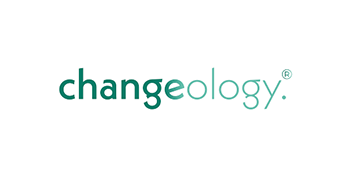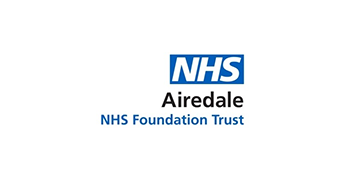The journey towards greater process efficiency in a specialist cancer care unit


- Industry
- Healthcare
- Location
- Keighley, West Yorkshire, UK
- Goal
- Improve patient and staff experiences using simulation to develop a bespoke method for scheduling appointments and optimizing resources.
Achievements with Simul8
-
-
Patient wait times reduced by over 50%
-
-
75% reduction in overtime hours due to better planning and scheduling
-
-
Unit costs decreased by £15,000 per month
-
-
Staff empowered with a reusable simulation for operational planning
-
-
The project has been recognized with a Silver Award for Best Healthcare Analytics Project for the NHS at the Health Service Journal (HSJ) Partnership Awards 2024
About the project
When the management of the Haematology and Oncology Day Unit (HODU) at Airedale General Hospital first started working with change management specialist Changeology, they were struggling from the pressures of staff working long hours while patient wait times were regularly impacted by a challenging scheduling system.
Using Simul8 to create an optimized new blueprint for all patient appointments, by the end of the project the unit would benefit from:
- Patient wait times reduced by over 50%
- 75% reduction in overtime hours due to better planning and scheduling
- Unit costs decreased by £15,000 per month
- Staff empowered with a reusable simulation for operational planning
Here's how they did it, and in doing so, how they set up a best practice approach for future process improvement initiatives using simulation.
The unit serves Airedale and the surrounding areas. It provides chemotherapy, therapeutic oncology treatments and blood transfusions to approximately 100 patients daily. Treatment times can vary between 30-minute and ten-hour intensive sessions.
Working with Changeology, Airedale HODU began an initiative to improve efficiency within the unit and reduce monthly costs. Simul8's simulation software would be used to redefine the management of patient scheduling so that resources could be optimized, staff wellbeing would improve, and patient flow managed in the most efficient way for better patient outcomes. The project also aimed to empower the unit with enhanced agility in managing its daily operations via a digital twin on an ongoing basis, helping to achieve certainty in a constantly changing environment.


"Our experience of using simulation software was vital. We were able to spot areas for improvement at an early stage of the process and knew we could add value."
Director of Operations at Changeology

The challenge
In 2022, the unit underwent a £175,000 refurbishment, which saw the addition of a new treatment room, upgraded technology in all areas and 12 pressure-relieving treatment chairs, ensuring maximum comfort for patients receiving chemotherapy. However, in spite of this investment, it was still facing the same struggles around long patient wait times and continuous overtime to keep up with patient scheduling. The result was a less-than-optimal patient experience, staff fatigue and increased costs.
At the time of the project, Airedale HODU offered a variety of cancer treatments, with regular additions and changes being made to treatment plans. Patients across West Yorkshire could book appointments without restriction. However, the unit didn't match appointments to the resources needed to deliver a complex matrix of treatments.
For example, one chemotherapy session may take two hours and another six hours. If the sessions don't start until six in the evening, staff must be on the unit until midnight. Or, if a patient is attending their first appointment, a staff member must stay with them for the duration of their treatment. Furthermore, the unit must prioritize patients referred via Airedale's accident and emergency department or the cancer care hotline whereby those who have suffered complications from their treatment will take priority over regular appointments.
The overall result was that treatment chairs were often underutilized, but staff still worked long hours to ensure all patients completed their treatments. There was also a significant wellbeing issue for patients when important appointments needed to be rescheduled or they were worried about their condition, and for staff that would be stretched in different directions and suffer long working days, often without time for lunch.


"We immersed ourselves in the HODU's daily processes. That way we could fully understand the challenges staff faced and find solutions to overcome them. Engaging the unit's team was central to us achieving our goals."
Director of Operations at Changeology

Project goals

Utilize the available data to drive improvements

Develop a bespoke method to schedule appointments

Improve experiences for staff and patients
Phase one would be to understand the current challenges facing the unit and then use simulation to seek ways to improve the process performance so that improvements to the system could be implemented quickly. Phase two would be to take the improved outcomes one step further by developing a blueprint for optimising all patient scheduling, thereby creating a digital twin of the system that could be used on an ongoing basis and adapted for other departments. It was important that the Changeology team equipped staff at the Airedale HODU with the tools and knowledge of best practice process improvement that they could take forward for future simulation projects.
How did they do it?
To do so, they adopted a hands-on, collaborative approach to implementing change within the unit. It recognized the need to provide a sustainable, high-quality, tailored solution that would address organisational needs both now and in the future.
The Changeology team spent four months on the ground conducting a full review of the HODU's management operating system and getting to know first-hand how operations typically play out and the impact on staff and patients. It was essential to get as close to the process and the people involved as possible. Changeology knew it needed to build trust and demonstrate the benefits of the technology. It wanted to show commitment to continuously improving the HODU's processes and that they weren't just people in suits asking questions that didn't understand the challenges staff faced. Achieving engagement from the unit's staff proved crucial to the project's success.
The team had weekly meetings with the COO, CFO, other senior leaders and the informatics team to secure their buy-in for the project and understand the impact any changes could have on other departments.
Together they created a visualisation of the information and data that staff could understand. The team developed a process map and used simulation software to identify areas of improvement. All process flows were mapped and reviewed with key stakeholders, including management, front-line staff and the admin team. Each was validated with data and observed. The team knew from previous projects that a visually engaging simulation brings data and analytics to life and gives senior management certainty in their decision-making.
Through process mapping and data analysis, Changeology identified that the way in which patients' appointments were being scheduled was the root cause of inefficiencies and increased running costs. The results gave an overview of the unit's capacity and demand, which enabled Changeology to feed new data into the simulation to create a scheduling blueprint that worked.


"This was an incredibly important piece of work, and it is terrific that it has been recognised in this way. We do our best work when we create new opportunities for collaboration and innovation and this project will not only benefit cancer patients but also the staff who are dedicated and committed to providing a terrific service."
Programme Director for the West Yorkshire and Harrogate Cancer Alliance

The Results
The new system mapped out suitable appointment options for the various treatments in a way that maximized available resources and gave every patient the time they needed. Utilising analytics and simulation software enabled the team to reduce waiting times by over 50% thanks to enhanced booking efficiency and emergency planning.
Throughout the project, Changeology implemented a staff-led appointment booking system that aligned demand with unit capacity and reduced overtime hours by 75%. As a result, unit running costs decreased by £15,000 a month. Additionally, the unit saw 5% more patients without compromising their care or staff resources. The results from the simulation also identified ways of increasing that figure by a further 10% in the future.
The project has been recognized with a Silver Award for Best Healthcare Analytics Project for the NHS at the Health Service Journal (HSJ) Partnership Awards 2024. The HSJ is a leading provider of insights and intelligence for healthcare leaders and celebrates the achievements of the UK's NHS and social care sector.
The Future of Patient Management
The simulation was developed for continuous use, to live alongside the real world system as a digital twin with several easy-to-use tools for the team to use daily without technical knowledge. It was built to be agile and adjust the appointment options depending on the changing dynamics experienced within the unit day-to-day.
The collaborative approach for this project meant that the HODU team had developed best practice approaches to reviewing and optimising processes using simulation, which they could take forward.
The results have been so positive that the informatics team are sharing their knowledge of simulation modelling with other services, and the hope is to roll out similar projects for additional departments within the hospital, as well as being made available to other HODUs across the region.
Learn more about Simul8 for healthcare process improvement
Find out more about how simulation is used by healthcare organizations, read more case studies and access a range of learning resources.
Learn more

